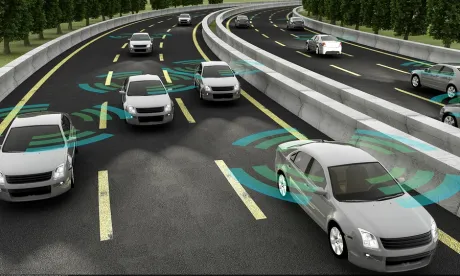On October 4, 2017, the Senate Commerce, Science and Transportation Committee advanced S. 1885, the American Vision for Safer Transportation through Advancement of Revolutionary Technologies Act, or “AV START”, by voice vote.
The AV START Act would clarify federal leadership in regulating highly automated passenger vehicle technologies at levels 3, 4 and 5 of automation as defined by SAE International. At these higher levels of automation, the automated driving system performs all aspects of the dynamic driving task with little or no human intervention. The bill also allows the Department of Transportation to exempt certain vehicles from Federal Motor Vehicle Safety Standards (FMVSS) in order to allow for testing of automated vehicles on public roads. Through negotiations and amendments, the bill also included provisions aimed to ensure safety, promote innovative development, and protect against cyber and data security threats.
Bipartisan negotiations had been taking place behind the scenes for months before the introduction of the bill on September 28th and continued until just before Committee action on the bill began. The Committee adopted 26 amendments by voice vote as the hearing started, including those on cybersecurity, safety, and consumer education. The full list of amendments considered by the Committee is available here.
Where the National Highway Transportation Safety Administration's (NHTSA) recent federal guidance on automated vehicles encourages a voluntary safety assessment, the AV START Act includes a provision requiring manufacturers to submit annually a mandatory safety evaluation report on any highly automated vehicle or automated driving system. It also contains a provision requiring manufacturers to submit a written plan to identify and reduce cybersecurity risks.
The most contentious issue the Committee faced was whether or not to include heavy-duty vehicles – classified as any vehicle weighing over 10,000 pounds – in this bill. Initially, heavy-duty vehicles were included in the base text of the bill, but were later removed after concerns about the impact automated heavy-duty vehicles might have on the labor force. Senator James Inhofe (R-OK) offered an amendment that would restore the initial scope of the bill to include heavy-duty trucks. Inhofe withdrew the amendment following a commitment from Chairman John Thune (R-SD) that the issue would be addressed in a separate bill.
Likelihood of Enactment and Next Steps
Legislation addressing the regulatory framework for automated vehicle technology is an issue that enjoys rare bipartisan support in Congress. Last month, the House of Representatives passed its own automated vehicle technology bill, the SELF DRIVE Act (H.R. 3388), by voice vote. If the full Senate were to consider and pass S. 1885, Committee leaders from both chambers would negotiate the differences between the House and Senate bills in a Conference Committee. Once reconciled and agreed to in the Conference Committee, and passed by each chamber again, it would require a signature by the President.
The more likely path forward will be for the sponsors of the Senate bill to include the AV START Act in a larger legislative package dealing with infrastructure, an issue important to Republicans and Democrats in both the House and Senate.
To find out more about H.R. 3388 or the guidance issued by the Department of Transportation please see out Alert entitled “Federal Government Takes Steps to Shape Rules for Automated Vehicles.”





 />i
/>i
